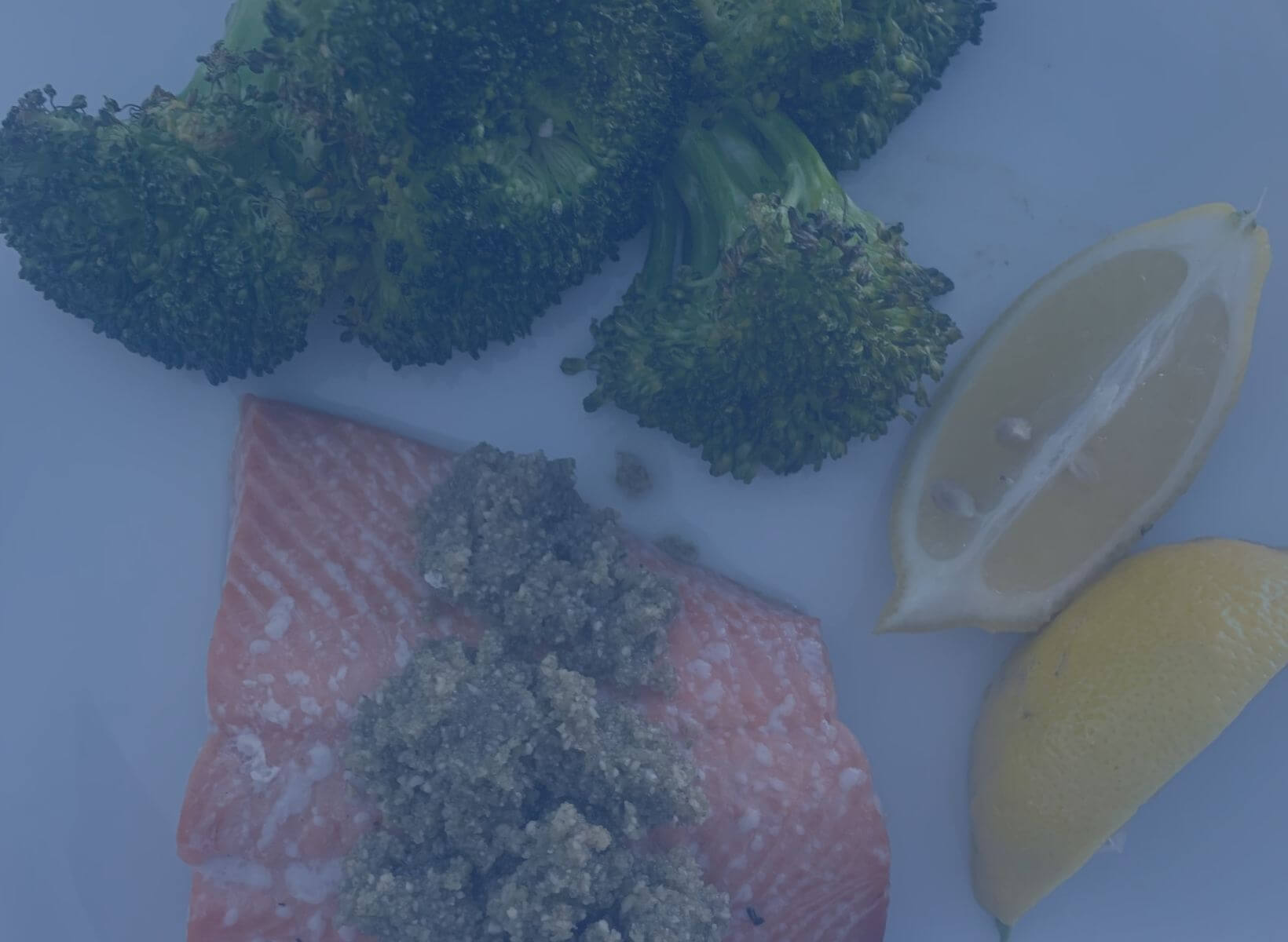You can infer from the word itself what condition hyperinsulinemia describes. Hyper comes from the Greek word huper, meaning ‘over’ or ‘beyond,’ and emia is the Greek suffix meaning ‘of the blood.’ Hyperinsulinemia is the condition of having more insulin in your bloodstream than is considered healthy. The condition is tightly tied to insulin resistance, and it isn’t the same as type 2 diabetes, but it can lead to it.1 The good news is that healthy lifestyle changes can improve the condition and are the most effective treatment method.
In this article, we’ll discuss hyperinsulinemia, how to identify it, and the risk factors associated with it. We’ll also explain its consequences and how it’s treated, including ways to control your insulin levels with lifestyle changes.
{{mid-cta}}
Hyperinsulinemia: What Is It?
The food you eat is broken down into energy sources that fuel your body, mainly glucose that goes into your bloodstream. After eating, insulin is released from pancreatic beta cells to regulate glucose uptake into cells for use as fuel or storage. Insulin levels constantly change as your metabolism responds to food, exercise, sleep, stress, and other factors. In a normally functioning body, insulin keeps blood sugar stable.
Hyperinsulinemia is the name for the condition of having higher levels of insulin in your blood than is considered healthy. Higher-than-normal insulin levels can be problematic because they can affect your metabolic health and lead to serious health concerns.
Causes and Risk Factors of Hyperinsulinemia

Hyperinsulinemia is tightly tied to insulin resistance. Insulin resistance occurs when your cells do not respond correctly to insulin. When your cells don’t register the hormone correctly, glucose stays in the bloodstream, and your pancreas compensates by producing more and more insulin, leading to hyperinsulinemia. Hyperglycemia, when blood glucose levels are higher for a long period, is one factor that can cause insulin resistance. Recent research suggests that hyperinsulinemia may also increase insulin resistance, indicating there might be a positive feedback loop at play.2
Now, if you are confused by the relationship of insulin resistance to hyperinsulinemia and their seemingly contradicting symptoms, don’t worry! How blood glucose levels affect and are affected by these two conditions is complex, reflecting the complexity of the metabolic pathways involved. The takeaway is that insulin resistance and hyperinsulinemia are tightly related, and it's generally accepted that the first usually causes the second. Because of this, hyperinsulinemia is usually addressed by trying to improve insulin sensitivity.
However, insulin resistance is not the only cause of hyperinsulinemia. Though rare, it can also be caused by:
- Congenital Hyperinsulinism is a genetic condition that causes dysfunctional insulin secretion from birth. Insulin production from beta cells is not tied to glucose metabolism, so the amount of insulin released is not proportional to blood glucose levels.
- Nesidioblastosis is characterized by the proliferation of islet cells budding off pancreatic ducts, resulting in an overabundance or overactivity of pancreatic insulin-producing cells.3 This is mostly a childhood disease rarely found in adults.4
- Insulinoma is when a tumor grows on the pancreas beta cells, causing them to produce insulin dysfunctionally.
- Gastric Bypass Surgery can, in rare cases, cause hyperinsulinemia as well, though experts aren’t sure exactly why. It may be because, after the surgery, your beta cells do not need to be as active as before when food intake was higher.
Risk factors that are not necessarily causes but closely associated with hyperinsulinemia are:
- High Visceral Fat
- Obesity
- Hypertension
- Genetic Predisposition
- Environmental and Lifestyle Factors can also influence your probability of developing hyperinsulinemia.
<p class="pro-tip"><strong>Also Read: </strong><a href=bmi>The Limitations of BMI</a>.</p>
10 Signs and Symptoms of Hyperinsulinemia
It is possible to have hyperinsulinemia without experiencing any symptoms. In fact, on most occasions, patients do not show signs of hyperinsulinemia.5 However, higher-than-normal insulin in the blood can lead to low blood sugar or hypoglycemia when symptoms show up. Your cells rely on sugar in the bloodstream to carry out their functions, so you'll feel the effects if you don’t have enough of it.
Many of the symptoms of hypoglycemia can look similar to when you don’t eat enough. You might experience:
- Increased Hunger: When blood sugar is low, your body thinks it’s deprived of its main energy source, glucose. Hunger hormones are released to indicate to your body that you need to eat more, making you feel more hungry or hungry more often than you normally do.
- Sugar Cravings: When glucose-deprived, your body wants quick-acting energy. The fastest way to replenish your blood glucose levels is to eat sweets or refined carbohydrates, which is what your body signals it wants. However, giving in to these cravings is not the most sustainable or healthy way to balance out your blood sugar levels.
- Difficulty Concentrating: Your brain uses up to 80% of available glucose, making it the highest glucose consumer among your body’s organs.6 When you don’t have enough glucose in your bloodstream, your brain is one of the first organs to feel it.
- Anxiety
- Fatigue: Low energy levels can come from insufficient glucose to give you energy and power your body.
- Lack of Motivation
- Weight Gain: Insulin regulates glucose uptake into cells, so when insulin is high, so is glucose uptake and storage. Abnormally high insulin can cause more energy storage than breakdown, increasing fat stores. The resulting weight gain is often around the abdominal area.
Severe symptoms of hypoglycemia can include:
- Seizures
- Coma
- Cognitive Function Issues (especially in young children)
Possible Complications of Hyperinsulinemia
Insulin is a central component of metabolism, so when it is out of balance, many things are affected.
Hyperinsulinemia can lead to:
- Prediabetes or Type 2 Diabetes: Hyperinsulinemia is an indicator that your pancreatic beta cells are overworking themselves. This can lead to cell burnout or simply the inability to meet the demands of insulin-resistant cells.
- Atherosclerosis (hardening of the arteries)
- Hypertension (high blood pressure)
- Weight Gain
- Increase in Uric Acid Levels
- Increase in Triglycerides
Hyperinsulinemia: Treatment Options

Apart from the rare cases of hyperinsulinemia caused by congenital hyperinsulinemia, nesidioblastosis, or insulinoma, which may require surgery, most treatment of hyperinsulinemia focuses on lifestyle. Lifestyle changes can decrease insulin levels by increasing insulin sensitivity, which is how responsive your cells are to insulin. Lifestyle changes can also improve insulin clearance or how insulin is broken down in the body.
Treatment options that can help hyperinsulinemia include:
- Dieting: Food greatly impacts our endocrine system, so shifting to a healthier diet is often one of the first steps to improving hormone levels and metabolic health. Insulin resistance is often caused by chronically high glucose levels, which triggers the release of too much insulin. Eating low-glycemic and nutrient-dense meals can help keep blood sugar and insulin balanced. Dieting can help improve insulin sensitivity and reduce risk factors like high visceral fat, obesity, and hypertension.
- Exercising: Exercise goes hand-in-hand with dieting to improve hyperinsulinemia risk factors, insulin sensitivity, and insulin clearance.7, 8
- Medication: Hyperinsulinemia is not typically treated directly with medication. However, if lifestyle changes don’t improve the condition, your doctor might prescribe you medication that is often the same type prescribed for type 2 diabetes.
If you are experiencing symptoms of hyperinsulinemia, it’s important to talk with your healthcare provider early to avoid the development of severe symptoms. You’ll likely get a fasting blood test to measure your blood glucose and insulin levels. Your doctor might also request other markers to be measured, like triglycerides and response to glucagon. While hyperinsulinemia can significantly impact how your body feels and functions, the good news is that it can be managed mostly through shifting to a healthier lifestyle.
Learn More About How to Improve Blood Sugar Health With Signos’ Expert Advice
Choosing the proper medication for your health can be difficult. Get the help of experts from Signos’ team, whose advice will help you improve your health, manage your diabetes, and control weight loss. Signos works by using the science of metabolism and your personal blood glucose data to design a personalized plan for better overall health. Learn more about leveling up your health on Signos’ blog, and take this quiz to see if Signos is the tool for you!
<p class="pro-tip"><strong>Learn More: </strong><a href=lower-blood-sugar-fast>How to Lower Blood Sugar Fast: 11 Natural Ways</a>.</p>
- Item 1
- Item 2
- item 3
Topics discussed in this article:
References
- Freeman, A. M.; Acevedo, L. A.; Pennings, N. Insulin Resistance. In StatPearls; StatPearls Publishing: Treasure Island (FL), 2024.
- Janssen, J. A. M. J. L. Hyperinsulinemia and Its Pivotal Role in Aging, Obesity, Type 2 Diabetes, Cardiovascular Disease and Cancer. Int J Mol Sci 2021, 22 (15), 7797. https://doi.org/10.3390/ijms22157797.
- Arnoux, J.-B.; Verkarre, V.; Saint-Martin, C.; Montravers, F.; Brassier, A.; Valayannopoulos, V.; Brunelle, F.; Fournet, J.-C.; Robert, J.-J.; Aigrain, Y.; Bellanné-Chantelot, C.; de Lonlay, P. Congenital Hyperinsulinism: Current Trends in Diagnosis and Therapy. Orphanet J Rare Dis 2011, 6, 63. https://doi.org/10.1186/1750-1172-6-63.
- Dieterle, M. P.; Husari, A.; Prozmann, S. N.; Wiethoff, H.; Stenzinger, A.; Röhrich, M.; Pfeiffer, U.; Kießling, W. R.; Engel, H.; Sourij, H.; Steinberg, T.; Tomakidi, P.; Kopf, S.; Szendroedi, J. Diffuse, Adult-Onset Nesidioblastosis/Non-Insulinoma Pancreatogenous Hypoglycemia Syndrome (NIPHS): Review of the Literature of a Rare Cause of Hyperinsulinemic Hypoglycemia. Biomedicines 2023, 11 (6), 1732. https://doi.org/10.3390/biomedicines11061732.
- Crofts, C.; Schofield, G.; Zinn, C.; Wheldon, M.; Kraft, J. Identifying Hyperinsulinaemia in the Absence of Impaired Glucose Tolerance: An Examination of the Kraft Database. Diabetes research and clinical practice 2016, 118, 50–57. https://doi.org/10.1016/j.diabres.2016.06.007.
- Stanford researchers reveal surprising links between brain activity and glucose dynamics. Neurosurgery. https://med.stanford.edu/neurosurgery/news/2023/brain-glucose-activity (accessed 2024-06-27).
- Bird, S. R.; Hawley, J. A. Update on the Effects of Physical Activity on Insulin Sensitivity in Humans. BMJ Open Sport & Exercise Medicine 2017, 2 (1), e000143. https://doi.org/10.1136/bmjsem-2016-000143.
- Kurauti, M. A.; Freitas-Dias, R.; Ferreira, S. M.; Vettorazzi, J. F.; Nardelli, T. R.; Araujo, H. N.; Santos, G. J.; Carneiro, E. M.; Boschero, A. C.; Rezende, L. F.; Costa-Júnior, J. M. Acute Exercise Improves Insulin Clearance and Increases the Expression of Insulin-Degrading Enzyme in the Liver and Skeletal Muscle of Swiss Mice. PLoS One 2016, 11 (7), e0160239. https://doi.org/10.1371/journal.pone.0160239.

.jpg)




























